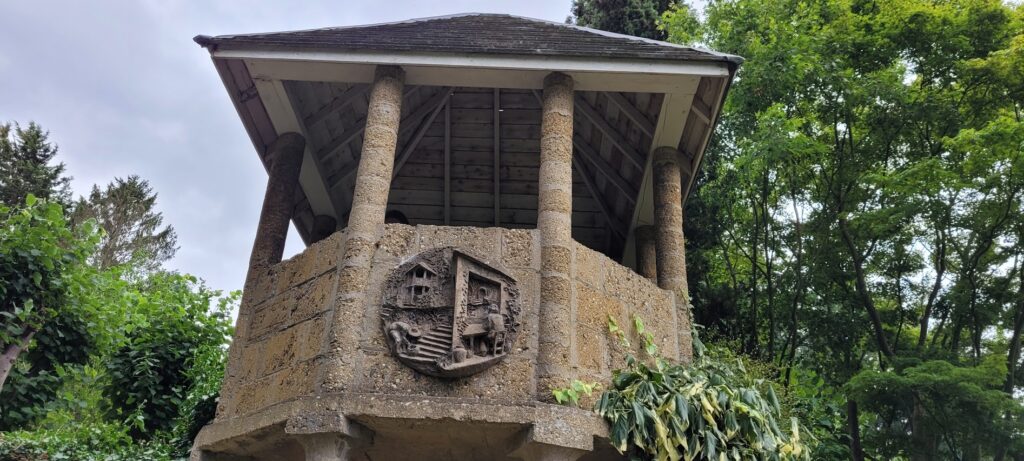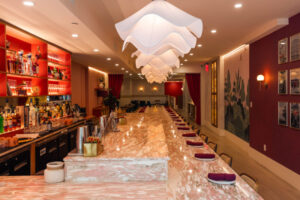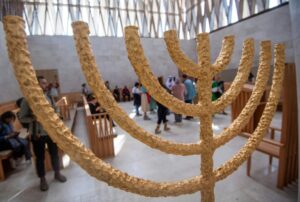UK heritage properties with unusual histories to visit

Grotto at the Gibberd Garden, Essex, Uk. Image by Tim Sandle.
When it comes to history the weird and the wonderful go hand-in-hand. Historic buildings are made more magical by the secrets held within their walls, many of which are unearthed centuries later or passed down into folklore. This it makes them the perfect candidate for discovering the stranger side of UK history.
British holidaymakers are obsessed with heritage properties. A record-breaking 550,000 families visited English Heritage sites in 2023, the highest amount since recordings started. This is an increase of 54 percent in a decade. Heritage is one of the UK’s characteristics, with 1,450 independent houses, gardens and protected venues.
The Heritage Window Company recently published a review of some of the most interesting places. Digital Journal has shifted through the list and selected five places with the strangest and most fascinating histories.
Woodchester Mansion, Gloucestershire

Woodchester House is an unfinished Victorian Gothic mansion in the heart of Gloucestershire, this beautiful home is open every weekend until November 3rd.
The home was originally purchased in 1845 by William Leigh, along with 400 acres of land, from Lord Ducie. What William was unaware of was that Lord Dulcie decided to sell up due to bizarre circumstances.
Lord Ducie inherited the property from his father and was immediately most concerned with throwing a huge party to celebrate his inheritance. When Lord Ducie took his seat at the party, he found his deceased father sitting in his seat.
Lord Ducie was so terrified that he fled the home and never returned.
The television programme Most Haunted Live featured the house in 2003, and again in 2005. It has become a regular haunt for ghost hunters. The building has featured on several television programmes, including the ghost hunting show Hauntings and Scariest Places On Earth.
Great Chalvedon Hall, Basildon
A quirky Grade II-listed pub in Basildon, Great Chalvedon Hall dates back to the 16th century. Its intrigue comes from a hidden compartment discovered by the owners.
When venturing into the attic, the owners found a panel disguising a hideaway, known to historians as a “priest hole”. This priest hole was used by Catholic priests who were being prosecuted by Henry VIII and Queen Elizabeth I in the 16th century and were often found with adjoining escape tunnels.
The escape tunnel at Great Chalvedon Hall unfortunately collapsed, but it is believed that it led out onto the nearby marshland. The hole and panel have been preserved and the stories delight locals to this day.
Close by is Pitsea Hall, now known as Cromwell Manor, a 15th-century house next to Pitsea railway station.
Black Bull Pub, Otley
The Black Bull Pub in Otley is a 1600s Yorkshire pub. The inn was the drinking hole of Oliver Cromwell’s men before the bloodiest battle of the English Civil War – the Battle of Marston Moor (1644).
The men allegedly drank the whole pub dry, celebrating what could have been their last night on Earth, and drinking for a (un)healthy dose of Dutch courage.
The pub has found many artefacts of British history through countless renovations, including an ancient wooden door, a 16th and 17th-century stone fireplace and an 18th-century stone pump.
Hindringham Hall, Norfolk
This 14th-century moated manor house, made of flint and red brick dressings with stunning red pantile roofs. Taking lavish luxury to a new level, the surrounding greenery, moat and stone bridge is like something from a fairy tale.
After construction in c.1553, the house fell into disrepair before being restored in 1900 by Gerald Gosselin from Bengeo Hall in Herts.
Houghton Hall & Gardens, King’s Lynn
Arguably the grandest survivor of the Palladian era, this stunning country home with lush gardens was built in the 1720s for Britain’s first Prime Minister – Sir Robert Walpole.
Made by architects James Gibbs and Colen Campbell, with ornamented interiors by William Kent, this home is the physical embodiment of Walpole’s immense political power and significance.
What makes this home unusual is that its origin is the only one of its kind – a home made to mark the reign of a prime minister.
The grounds consist of a 100-sculpture display. Time Horizon by Sir Antony Gormley is a showcase of 100 life-size sculptures across the plane of the 300-acre parkland.
UK heritage properties with unusual histories to visit
#heritage #properties #unusual #histories #visit





